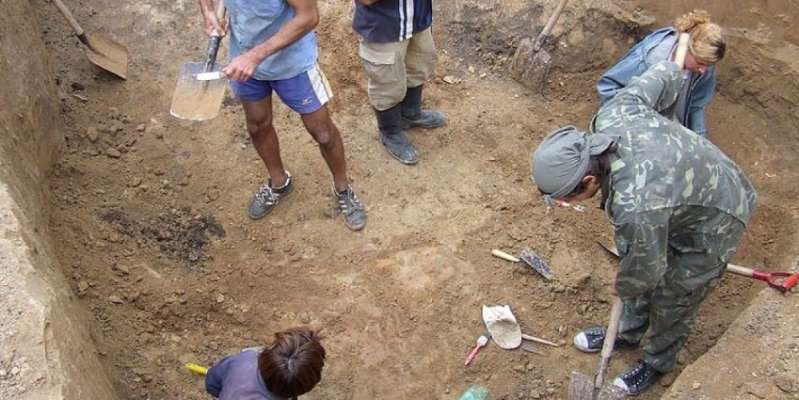
The ancient Scythians turned out to be farmers
The idea of the Scythians as a warlike nomadic people may be far from reality, scientists from the University of Michigan found out. They analyzed ancient bones and were able to learn more about the lifestyle of this tribe, according to PLOS One .
Scythians lived in the Eurasian steppe. It is believed that they flourished between 700-200 BC. Historical evidence of meetings with them has been preserved (in particular, the records of the ancient Greek historian Herodotus), as well as archaeological artifacts. In the burials of the Scythians, as a rule, there are a lot of military ammunition and weapons, which makes it possible to judge them as a warlike people.
But in fact, a new study showed that many Scythians were sedentary and engaged in agriculture. Only a small part of the population made long journeys.
The team performed an isotope analysis of Scythian teeth and bones found in three burial grounds in central and eastern Ukraine. Scientists examined the remains of 56 people, as well as several cows and pigs – this helped them learn more about the livestock and diet of the ancient tribes.
Isotope analysis helps to establish where and when a particular person lived. Combinations of isotopes in the soil are absorbed by plants, and plants, in turn, enter the body of humans and animals. Each geographic region has its own isotope signature. Since isotopes decay at a known rate, they can be used as “markers” not only of space, but also of time. Isotope analysis can even reveal whether a person has moved from place to place during their life.
The researchers analyzed the isotopes of strontium, oxygen, nitrogen and carbon in the Scythians and compared them with samples from the more ancient inhabitants of Ukraine (from the Neolithic to the Iron Age). It turned out that people from all three graves often consumed millet. This speaks of a developed agriculture and a sedentary lifestyle. Only two ate less millet and apparently moved frequently.
Scientists noted that the people, which today are known under the general name “Scythians”, in fact, were several isolated groups that differed in different ways and ways of life. The Scythian era was a “period of contradiction” between them.
New research can reveal the details of the life of the Scythians, help scientists move away from “clichés and stereotypes towards a richer and more realistic understanding of human history,” the authors noted. Another study showed that harsh customs reigned among the nomads. A large number of traces of violence have been preserved on the remains from ancient graves.

